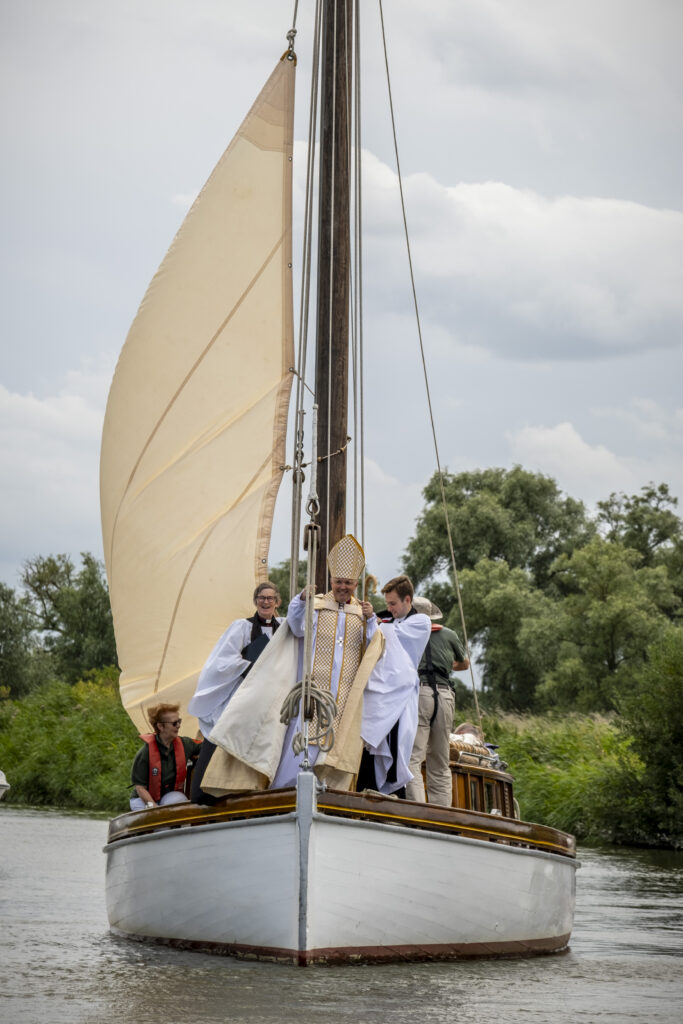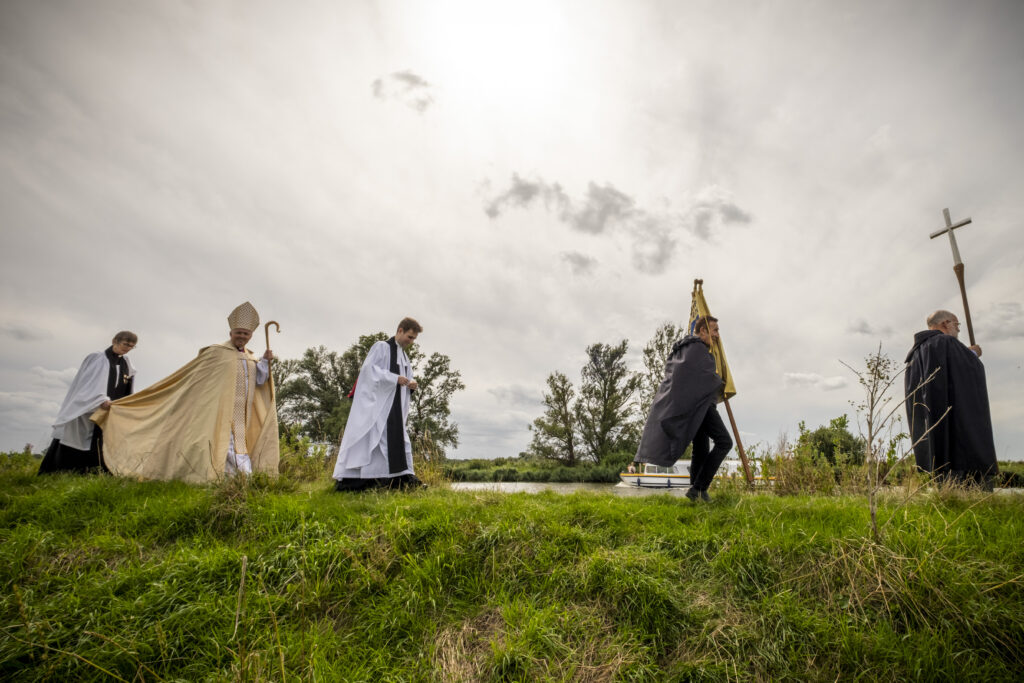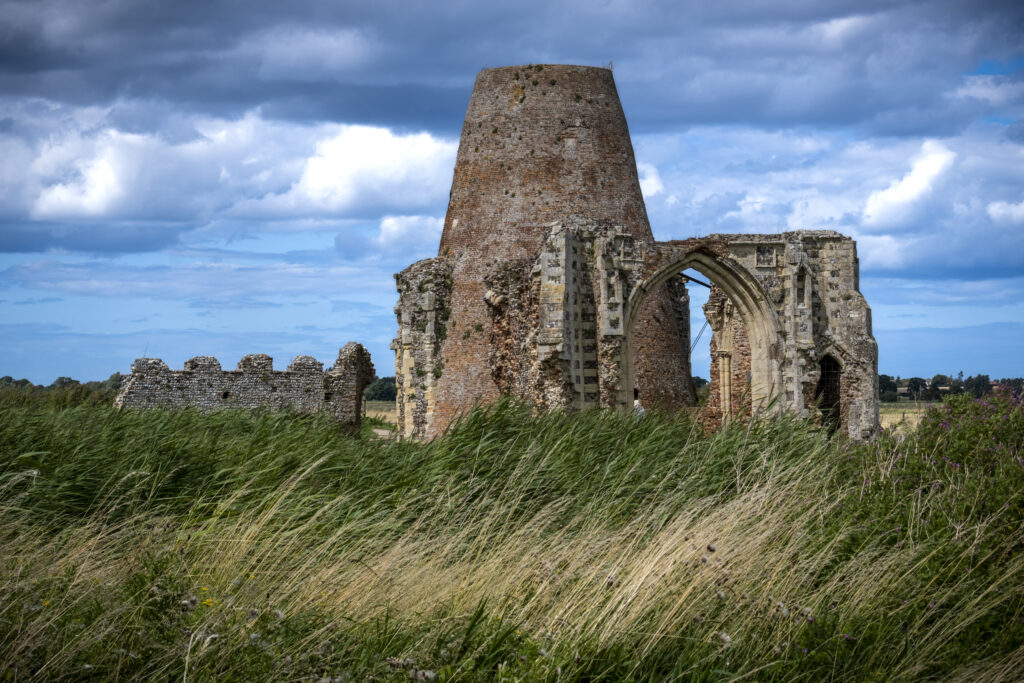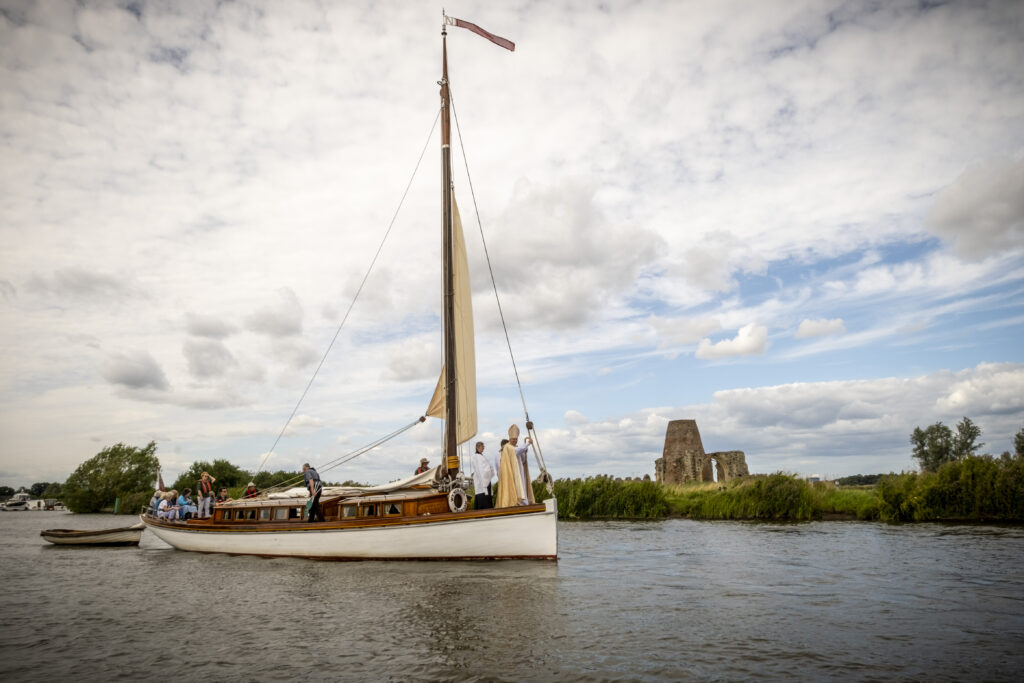One of Norfolk’s most fascinating traditions takes place in one of its most isolated and picturesque locations on Sunday July 28.
The Bishop of Norwich will arrive by wherry to lead an open-air service in the riverside ruins of St Benet’s Abbey, near Ludham.
All are welcome.
St Benet’s was founded by King Canute more than a thousand years ago and was the only monastery in the country to survive Henry VIII’s destruction. The Bishop of Norwich became Abbot of St Benet’s and the abbey was never officially dissolved. To this day every Bishop of Norwich is also Abbot of St Benet’s.
The Bishop of Norwich the Rt Revd Graham Usher, will sail to St Benet’s aboard a traditional wherry and lead the annual outdoor service surrounded by water, sky and the remains of the once-magnificent abbey.
Although St Benet’s was never formally dissolved, little is left except a gatehouse and an 18th century wind pump. The view is much loved by painters and photographers and the site, looked after by the Norfolk Archaeological Trust, is free to enter.
Local people, holidaymakers, visitors and pilgrims travel by boat and footpath for the annual ecumenical service, which is open to all. The Bishop will arrive aboard one of the Wherry Yacht Charter’s traditional wherries and process to the site where the high altar once stood. The service, at 3.30pm on Sunday July 28, is organised by the Community of St Benet’s.
The abbey of St Benet’s was founded in 1019 when Canute, King of Denmark, Norway, Sweden and England, gave the land to a community of monks. There are even earlier traditions of Christian hermits living in this holy place. Stories and legends have swirled around the abbey and one of its biggest benefactors (and the inspiration for Shakespeare’s Falstaff) was Norfolk knight Sir John Fastolf, whose grave is here.





